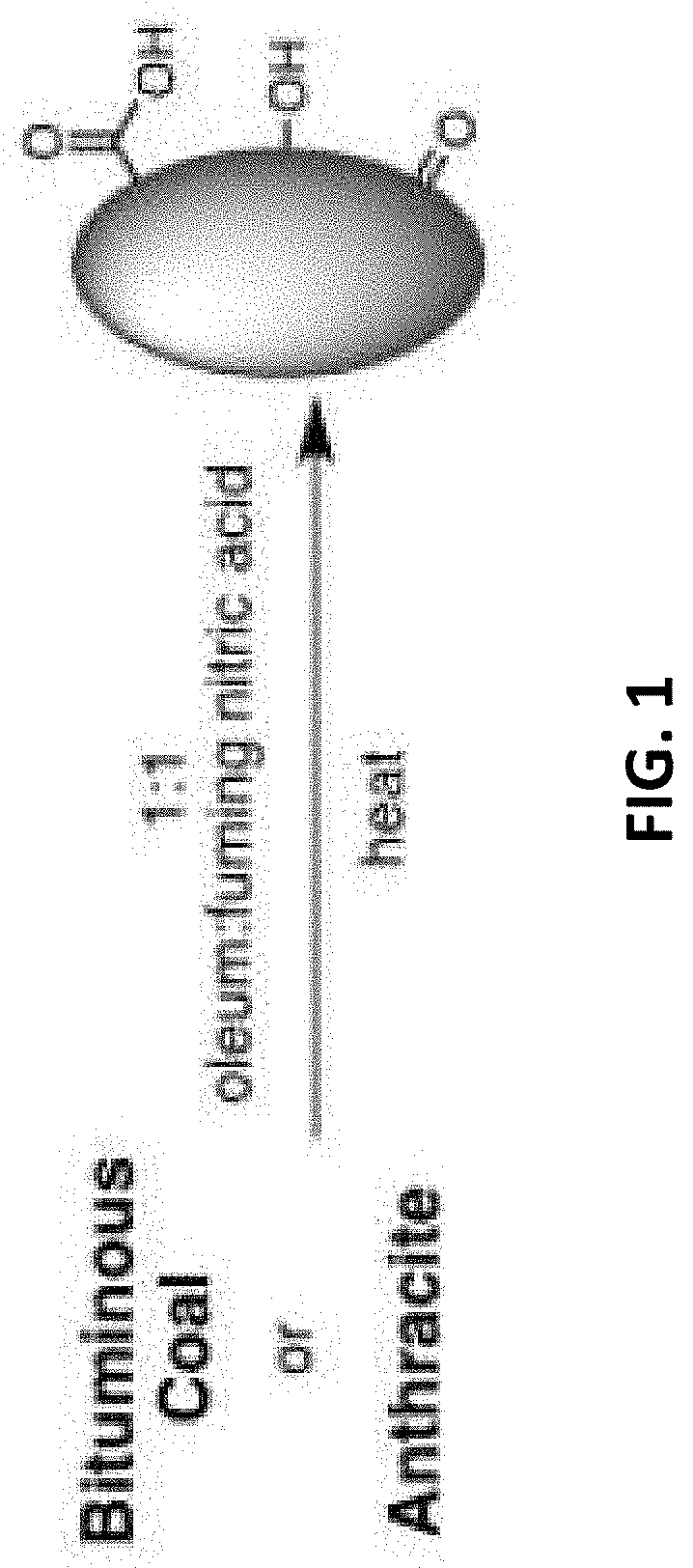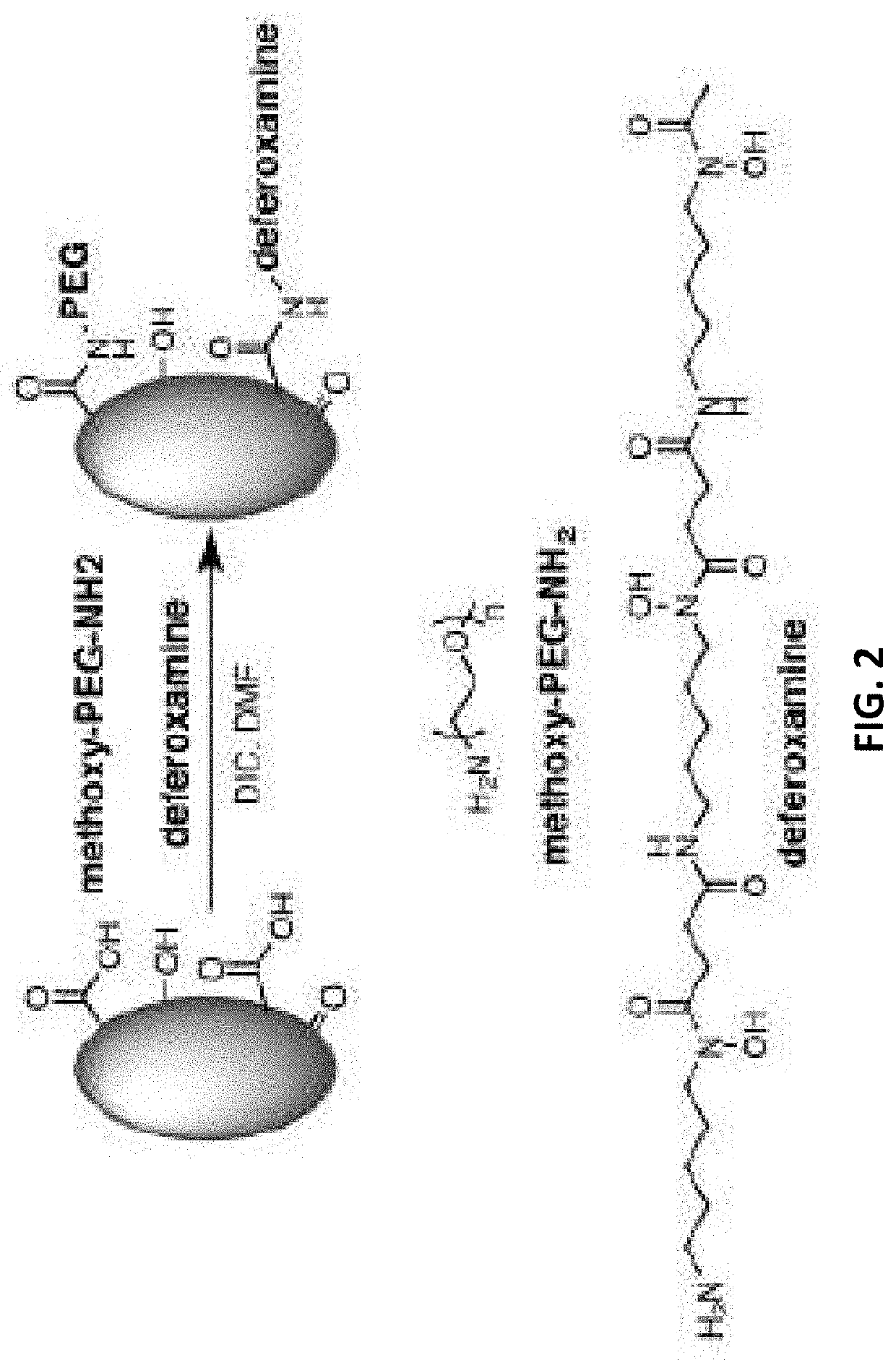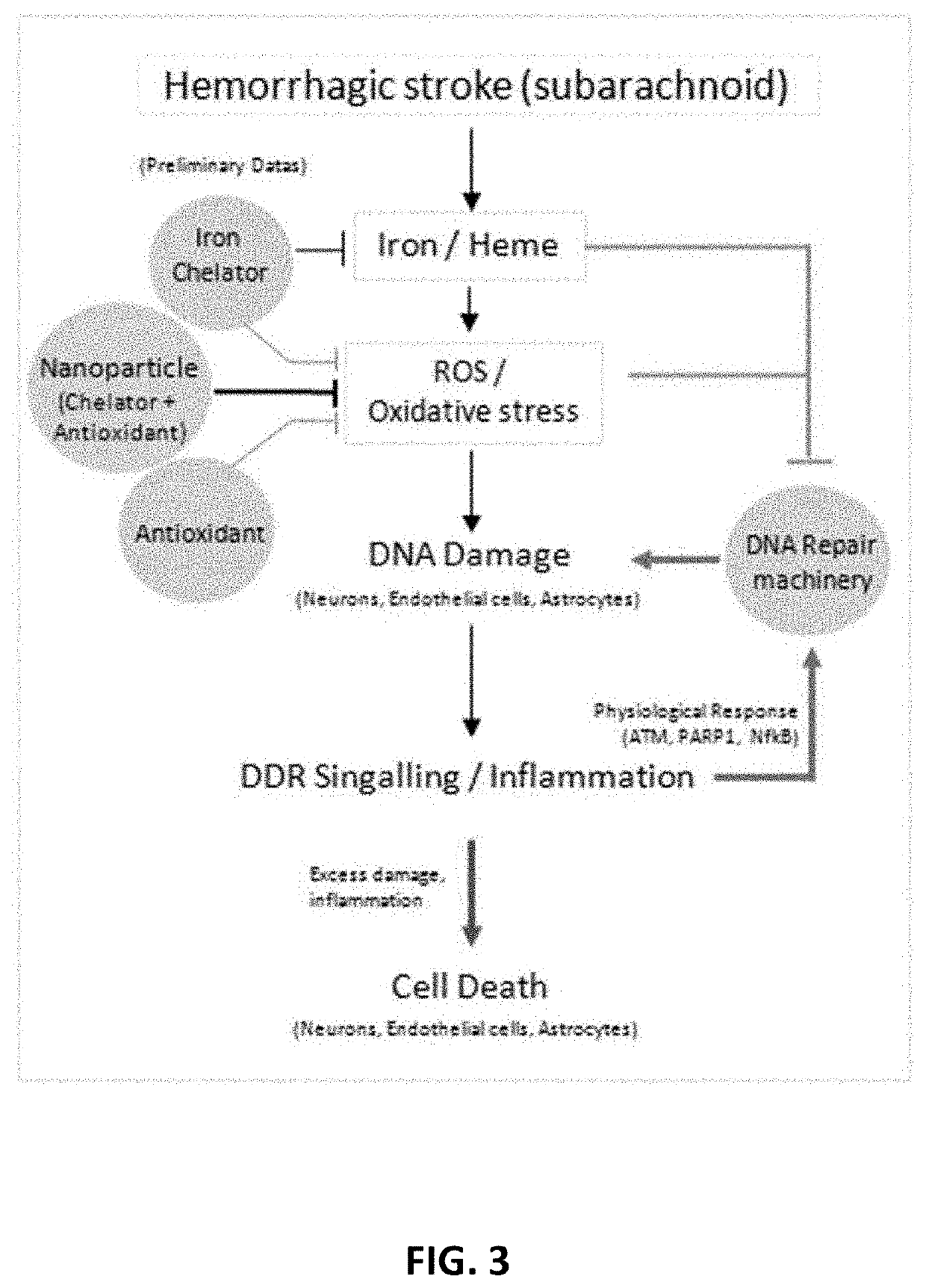Acute and chronic mitochondrial electron transport chain dysfunction treatments and graphenic materials for use thereof
a mitochondrial electron transport chain and graphene technology, applied in the direction of capsule delivery, microcapsules, drug compositions, etc., can solve the problems of reducing the effect of antioxidant therapy in any form of brain injury, affecting the effectiveness of antioxidant therapy, and affecting the severity of tbi, so as to reduce the cause and consequences of metal induced oxidative stress, facilitate intracellular transport, and reduce the oxidative breakdown of the chelator moiety
- Summary
- Abstract
- Description
- Claims
- Application Information
AI Technical Summary
Benefits of technology
Problems solved by technology
Method used
Image
Examples
Embodiment Construction
[0163]The present invention is a novel therapy for treating tissue injury, and in particular brain injury, such as after hemorrhage in which free iron is released from degraded hemoglobin. One example of this is intracerebral hemorrhage (ICH) in which iron as well as oxidative degradation products of hemoglobin induce cellular toxicity such as to the DNA damage and repair (DDR) responses, cellular death and dysfunction. Iron catalyzes many deleterious processes and in particular oxidative stress due to formation of hydroxyl radical. Iron and other heavy metals also involves many forms of injury including neurodegeneration such as due to accumulation of Alzheimer's Disease toxic proteins that also involve excess binding of iron and other metals. However, these findings have not yet led to an effective treatment to improve functional outcome.
[0164]A consequence of this oxidative stress is the occurrence of both oxidative DNA damage and inhibition of DNA repair, both of which have impo...
PUM
| Property | Measurement | Unit |
|---|---|---|
| Fraction | aaaaa | aaaaa |
| Fraction | aaaaa | aaaaa |
| Fraction | aaaaa | aaaaa |
Abstract
Description
Claims
Application Information
 Login to View More
Login to View More - R&D
- Intellectual Property
- Life Sciences
- Materials
- Tech Scout
- Unparalleled Data Quality
- Higher Quality Content
- 60% Fewer Hallucinations
Browse by: Latest US Patents, China's latest patents, Technical Efficacy Thesaurus, Application Domain, Technology Topic, Popular Technical Reports.
© 2025 PatSnap. All rights reserved.Legal|Privacy policy|Modern Slavery Act Transparency Statement|Sitemap|About US| Contact US: help@patsnap.com



